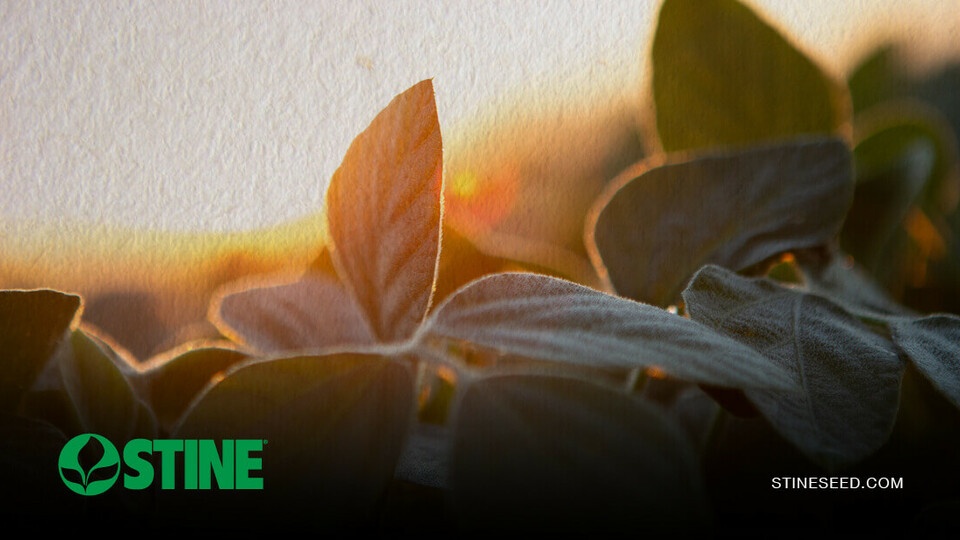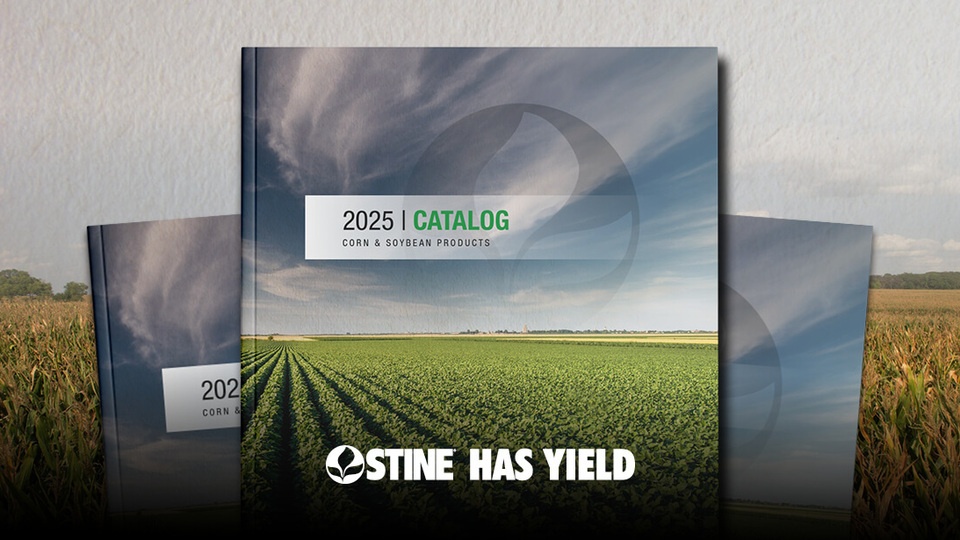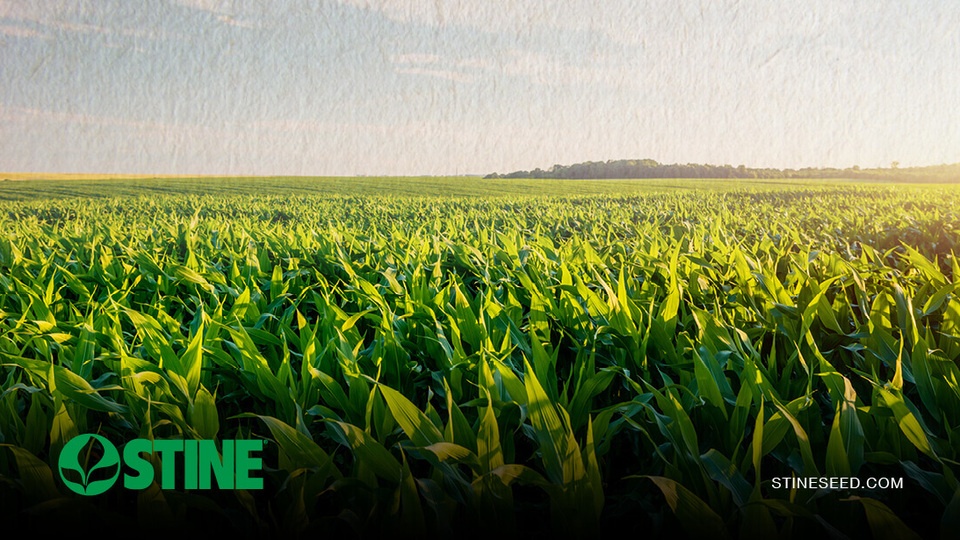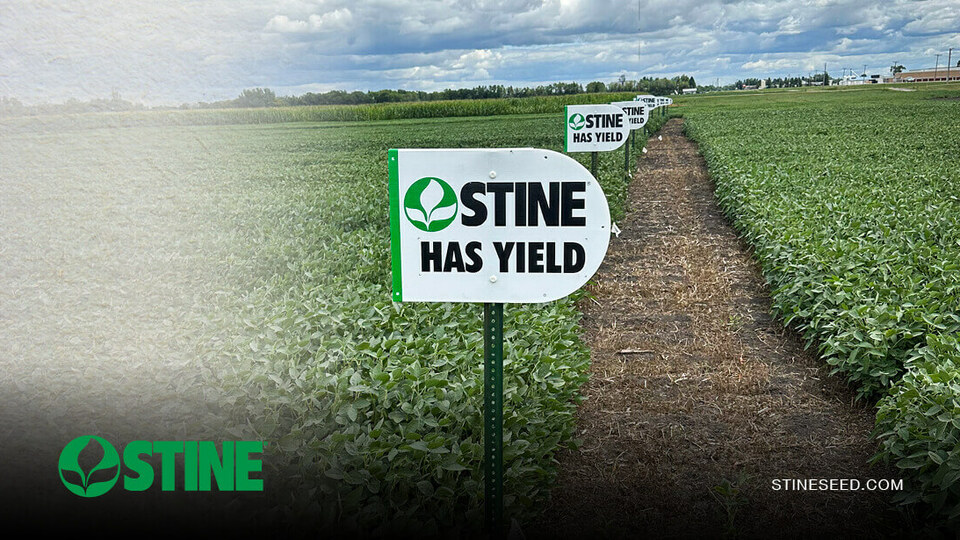Short-stature corn hybrids
Shorter corn hybrids have been offered by Stine® Seed Company for more than a decade — and have been researched by the company for more than 25 years. Stine’s research in short-stature corn is leading the way to a future of consistently reaching 300-bushels per acre for U.S. corn growers.
It’s a bold prediction for an industry that had a national yield average of about 177 bushels per acre in 2023. The industry also has long kept to traditional corn hybrids that can grow up to 12 feet, which is the standard cultural practice in farming. However, Stine’s high-population research has shown time and again that planting short-stature corn increases yield.
This article will describe what hybrid corn is and, specifically, the research behind short-stature corn hybrids.

What is hybrid corn?
Simply put, hybrid corn is corn that results from cross-pollination. This is unique to corn because it is actually a type of grass. But corn, unlike most grasses, has male and female flowers that are separate from each other. Wind is primarily responsible for cross-pollinating the plants as it moves the tassels (male flower) of one plant to the silks (female flower) of others.
In the 1800s and 1900s, corn was in extremely high demand — not only as a food source for humans but also as feed for cattle and flour for baking. Farmers needed to produce more of the crop per acre and wanted higher yields. Interestingly, scientists began studying the benefits of cross-pollination in part due to Native American practices of planting different types of corn next to each other to encourage pollination from one to the other. This produced more vigorous corn hybrids. Because the male and female flowers are separate in corn plants, scientists could easily control pollination and study the results. This helped identify which varieties were more vigorous and which produced poorer yields.
It wasn’t until the 1930s that hybrid corn started being commercially grown. This had a dramatic effect on corn production. In the 1930s, annual U.S. corn yields averaged 24.2 bushels per acre. In 2007, this average skyrocketed to 151 bushels per acre.
Today, corn breeders use different practices to develop desirable traits and varieties. Since there are around 32,000 genes in corn, it can be difficult to get the best combinations. But research and newer technologies have evolved, and there are more than 200 different varieties of corn worldwide today. They range greatly in height and include the latest short-stature corn seeds that Stine has been researching for decades.
Brian Hartman, Stine’s national corn product manager, calls short-stature corn “the hottest thing” in the industry currently. While farmers may not have thought about planting short corn seeds five years ago, Hartman says it is becoming more accepted as they have begun to recognize the benefits.
“For the longest time, we were the only voice in the conversation around short-stature corn,” says Hartman, noting that Stine has commercially released more than 100 high-population hybrids — or short-stature corn hybrids — over the last 10 years. Most of its competitors are just beginning to sell short-stature corn seeds. “It’s nice to see other voices enter the conversation. But our research puts us way ahead of the game,” he says.
Stine’s research is not slowing down, either. Its breeding program continues to test hybrid corn at different populations, from high to low, to determine where they perform best. One of the biggest advantages to planting short corn seeds is improved standability. Short-stature corn resists lodging — or falling over during high winds or yield-damaging storms — far better than traditional, taller corn.
“You can have the highest-performing corn out there, but if you can’t harvest it, it’s no good to you,” says Hartman.
What kind of corn grows on short stalks?
There are many kinds of corn and short stalk varieties that grow on short stalks. Even more are being offered by seed companies that have started to understand the benefits of short-stature corn. At Stine, more than 100 short corn hybrids have been commercialized and hundreds more are in development. Basically, short corn stalks are being researched to grow all kinds of corn. Of course, not all corn is grown for the same purpose.
Let’s take a look at the biggest differences.
When most people think of corn, they imagine farmers markets and summer barbecues where sweet corn on the cob takes center stage. However, breeders select different traits for sweet corn than field corn. The uses for field corn include livestock feed, corn meal and nonfood products like ethanol. Typically, field corn remains in the field until it becomes very dry, and then it is harvested and sold to companies who use it for one or more of its many different purposes.
Most short stalk varieties of corn fall into the field corn category. Some are harvested strictly for seed for next year’s planting season.
Regardless of the kind of corn being grown, short corn hybrids can increase yield — sometimes dramatically. For example, over the past decade, Stine has been using its own genetically unique inbreds to custom-build hybrids that will flourish in dense populations. The company’s research has resulted in more money in growers’ pockets at harvest as growers are now able to establish more plants per acre.

What is the shortest corn?
Currently, short-stature corn is among the shortest field corn grown in the U.S. There is also dwarf corn, but it is more commonly used as a food source for deer and waterfowl and is planted near ponds or other water sources. Dwarf corn is often found in ornamental settings and sometimes only reaches 3–4 feet tall. In contrast, short-stature corn has an ideal height of 6–8 feet. Traditional field corn can grow up to 10–12 feet or more.
Breeders work with growth hormones to produce shorter segments between the leaves on the stalk. This process is typically done through traditional breeding procedures but can also occur through genetic modification.
It’s important to understand the difference between short-stature corn and dwarf corn. While both dwarf corn and short corn varieties offer advantages in space efficiency, short-stature corn is specifically designed for agricultural production. It maintains a height that allows for efficient harvesting with standard equipment, while dwarf corn may require specialized harvesting methods.
Does corn height affect yield?
Yes. Corn height can definitely affect yield. Stine was the originator of short-stature corn, and its breeding program was the first to introduce and market hybrids that were shorter — but also higher yielding — than conventional corn.
Stine has tested thousands of hybrids at varying populations and in multiple row configurations, including
10-inch rows,12-inch rows and the Stine HP Twin 20 planting system. They’ve also tested populations of more than 60,000 plants per acre. In fields with the best growing conditions, Stine’s tests found yields of more than 300 bushels per acre were common.
In 2014, Stine tested its HP Twin 20 planting system, a planting formation that took the concept of higher-population planting even further. It employed twin rows based on 20-inch centers, with 12 inches between rows and eight inches separating each pair of twin rows. This helped make better use of every acre, maximizing each plant’s access to sunlight and water resources. The result pushed yields up to 400 bushels per acre.
“We found that our short-stature corn was able to capture sunlight better and had good stalk strength and disease resistance.”
David Thompson, Stine national sales and marketing director
Stine has been evaluating corn plant heights since the 1990s. With Harry Stine’s research in high-population planting and narrow-row widths, Stine developed shorter, more efficient corn plants long before anyone else. Short corn has been proven to be a wise choice for farmers.
While the HP Twin 20 planting system isn’t actively used today, Thompson says its basic concept still holds true: “Our research shows higher populations result in better yield. We’re continuing to push the industry standard to help growers not only reach, but far exceed, their business potential.”
For now, Stine’s focus has turned to 15-inch rows, which allows growers to use their normal planter and yields the same results.
Recap: Will short corn still produce?
Absolutely! Short-stature corn will not only produce, but it can also reliably increase yield in many different growing conditions. And Stine has more than 80 years of data to prove it.
Company President Myron Stine expects an uptick in short-stature corn sales but notes it could be a slow adoption. Still, he believes in the future genetics of short-stature corn.
“We still believe, at the end of the day, that with the newer genetics that roll out of the breeding programs, probably not even just ours but even our competitors, you will have plants of a shorter stature relative to what we’re seeing today,” Stine says. “I think we’ll see more short-stature corn acres planted in the U.S. this year.”
Stine leadership says they’ve seen the benefits of planting short-stature corn seeds again and again. So much so that Stine Seed Farm Manager Steve Luther can’t imagine planting any other way.
“Our spacing is great,” Luther says. “When you walk through these fields, you’ll immediately understand the power of the genetics. It will make you wonder why you didn’t do this a long time ago. I mean, who doesn’t want to make more money for their farm off every acre?”
“What we keep hearing from growers is, ‘Wow! I didn’t expect the corn to do this.’ It’s that powerful of a program. Get your hands on it and see for yourself.”
Bill Kessinger, Stine Technical Agronomist
Of course, any emerging corn variety with the potential to dramatically increase yield comes with guidance on how to care for it. Myron Stine explains that short-stature corn typically needs higher planting populations, meaning it needs more inputs because the yield potential is much higher than conventional corn.
“And to get that yield potential, you need to make sure you’re managing that crop properly,” he says.
His best advice for growers is not to attempt to “test plant” short-stature corn on their farms. With short-stature corn, “shading” is a game-changing factor when it comes to yield. If short corn is planted near much taller conventional hybrids, farmers will get bad data because the taller plant will shade out the shorter corn and weaken its performance.
Stine works diligently with its customers to ensure they have the right product in the right place at the right time. While all of Stine’s corn hybrids are high performing in yield trials, short-stature corn is emerging as a better, more efficient option for many growers. And Stine has been at the forefront for decades in the research around it.
“We don’t think it’s important that it’s short, but we think that proper selection criteria in a corn breeding program is going to take those genetics in that direction,” Myron Stine says.
Short-stature corn is a dramatic and promising change in plant architecture that Stine has been working toward for more than three decades. This innovation is revolutionizing how we grow corn — the most produced crop in the world.
This article explored what hybrid corn is, the research behind Stine short corn and how Stine’s high-population corn can dramatically improve yield. The success of high-density corn and narrower planting rows hinges on advanced genetics. This is why Stine is aggressively pursuing new high-population hybrids that will shape the future of corn production.
Learn more about Stine short corn and other hybrids at StineSeed.com/corn/.
Learn more about Stine® Short-Stature Corn
Related Articles
-

Exclusive soybean offerings, only from Stine®
September 2024 in Agronomy
-

2025 Stine® Seed Catalog: Products by farmers, for farmers
September 2024 in Agronomy
-

Top corn offerings for 2025
August 2024 in Agronomy
-

Crop progress update
August 2024 in Agronomy
